Are you looking for the prettiest small towns in Norway for your upcoming trip? You’ve come to the right place!
Home to quaint towns and fishing villages that paint in beautiful contrast to dazzling fjords, salient marine landscapes and mountain backdrops, Norway is without a doubt one of the most consistently beautiful destinations on Earth. With an equally fiery heritage to complement its stunning scenery, it’s no wonder that so many towns in Norway are at the top of travelers’ bucket lists.
Be it be the constant interaction with the sea or the landscape’s bold daily reminder of the natural world’s magnificence, the people of Norway have cured a set of morals and identities that perpetuate their mutual existence in the world around them.
As a consequence of this, Norway, which has an outstanding number of UNESCO World Heritage Sites, 47 National Parks and over 3000 protected areas, is a leading country in the future of ecosystem preservation and sustainable tourism. Visiting Norway (with a conscious and open mind) benefits everyone! Exploring Norway one of the most sustainable and educational experiences out there! So, where to begin?
For an authentic cultural experience that simultaneously blends into the world’s most beautifully preserved fjord, mountain, and coastal landscapes, these beautiful small towns in Norway are the best places to begin experiencing Norway!
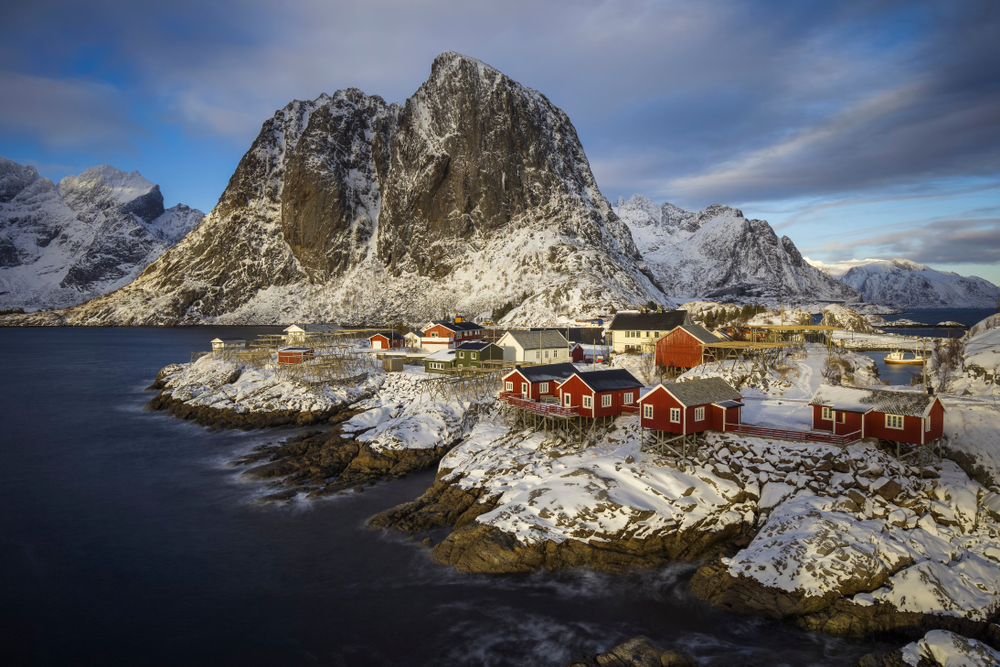
10 Prettiest Small Towns In Norway
Arendal
A romantic port city in the southeast of Norway, Arendal is a vibrant, colorful city that’s retained its village mentality throughout its many years. From water sports and hiking to exploring the city’s historical district’s houses, museums and shops, Arendal has everything to offer.
Arendal was at one point one of the most important port cities in Norway! Established in 1641, the town quickly became known for its shipping, shipbuilding, and timber trade with the help of its market city privileges and consistent contact with merchants abroad. By 1880, the city’s port handled more tonnage than any other port in the country and was home to the wealthiest of shipowners.
This city’s rich historical district is spread across 7 small islands and includes the city’s historical downtown, referred to as Tyholmen, and its harbor, Pollen. The old town proper consisted of a district of small houses for artisans, sailors and dayworkers, and is still mostly residential today. The lower Tyholmen blends into the Pollen district which would have been where merchants and shipowners lived by the sea. Today this area is the most dynamic, with popular restaurants, cafes and hotels. The most noteworthy of the historic buildings in this area is a large private home next to the harbor that functioned as the city’s town hall from 1884 to 2005. It’s the tallest, but second-largest wooden building in Norway!
There’s so many popular activities for locals and tourists alike in this town, including swimming in the ocean or the marina’s floating pool, paddle boarding in the archipelago, or visiting southern Norway’s largest contemporary art collection at Bomuldsfabriken Kunsthall. The city is also home to Norway’s smallest chocolate factory, a home confectionary called Heimdal Chokolade in the heart of the downtown where visitors can watch the process while tasting their confections. Here’s an amazing hotel deal in the heart of the historic town to help you get all of these stops checked off your itinerary!
If you’re arriving by boat, you’ll pass by two old lighthouses, Lille and Store Torungen fyr (large and small Torungen Lighthouses) that outfit the city’s front-facing archipelago. Built in 1844, these two were constructed to help approaching ships know which town they were entering. While Lille Torungen was discontinued in 1914, Store Torungen was outfitted with a new cast-iron tower 35.3 meters tall. Come and visit both because little has changed since then!
Another nearby location that shouldn’t be missed is Raet
National marine park in neighboring city Hove. In 2016, this park opened as the first of now 4 Marine National Parks in Norway. Ninety percent of the protected 607 square-meter land is actually underwater! Like any National Park, there’s amazing places to camp, hike and bike, but it’s also perfect for swimming, canoeing, boating, paddle boarding and enjoying its sandy beaches.
In fact, amazing scuba tours can be arranged to explore the fjord’s waterbed! This unique glacier-shaped coastal landscape spans the municipal Arendal, Grimstad and Tvedestrand coasts and can be reached by car or boat.
Finally, if arriving in Arendal during the summer months, make time to visit Merdø, a small car-free island immediately outside of the city. Just a short ferry ride away, the island boasts some of the best views of the city! The little island has narrow walking paths that lead visitors between its museum and its sandy beaches.
There’s a never-ending list of things to see and do in Arendal!
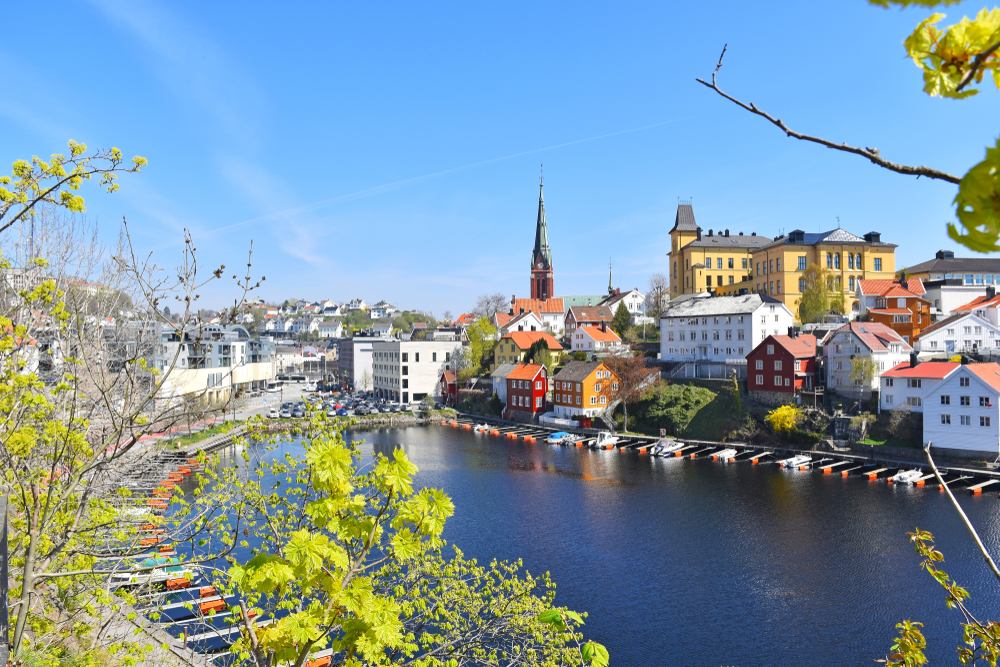
Flåm
Tucked into the Flåmsdalen valley of southwestern Norway’s fjord country, Flåm is the definition of a small picturesque village, and one of the best towns in Norway to visit. Amazingly, this village of approximately 400 receives over 450,000 tourists a year! But how DOES this happen?
Surprisingly, it’s not the 160 cruise ships that dock into the city’s port every summer, but the visitors who arrive by train that account for the majority of the town’s traffic. The town was made famous by the 20 km railway line between Flåm and Mytdal constructed in 1942. As one of the steepest and most magnificent train journeys earth, the Flåm Line is without a doubt the best way to experience the village and its surrounding landscape.
Winter or summer, visitors are able to experience something amazing when they take river cruises through the incredible fjords in the Flåmsdalen valley, which pass up next to dozens of stunning waterfalls. In fact, if you are visiting Europe in October, Norway is at its best at this time!
A second important stop to make while in Flåm is the Stegastein viewpoint, located about an hour and a half from the city. Although a trek, the location is unbeatable, and offers viewers what might be the best view of the fjords in the area. If time permits, a trip to the nearby Brekkkefossen waterfall is a great destination to hike.
Another great attraction to stop by is the Viking village! The fictional village of Naeroyfjord is set inside a UNESCO World Heritage landscape in the town of Gudvagen. The attraction, open every day from 10 to 6pm, is a living town populated by Viking enthusiasts working to reproduce what a Viking village would have looked like while educating visitors about the area’s local history and lore. This town can be reached from Flåm by cruise, and only takes only a couple of hours to reach.
In addition to the Flåm railway museum, other places to stop at within the city itself include the Flåm church, a stave schurch built in 1670, and the Aegir brew pub, a character-full brewery shaped like a stave church with craft beers and a warm staff. When the weather is permitting, the fjord is also a beautiful place to kayak, hike, and rent a bike!
For accommodations in Flåm, consider staying at the Hotel Flåm Marine, a secluded yet centrally located hotel with an amazing view of the Sognefjord.
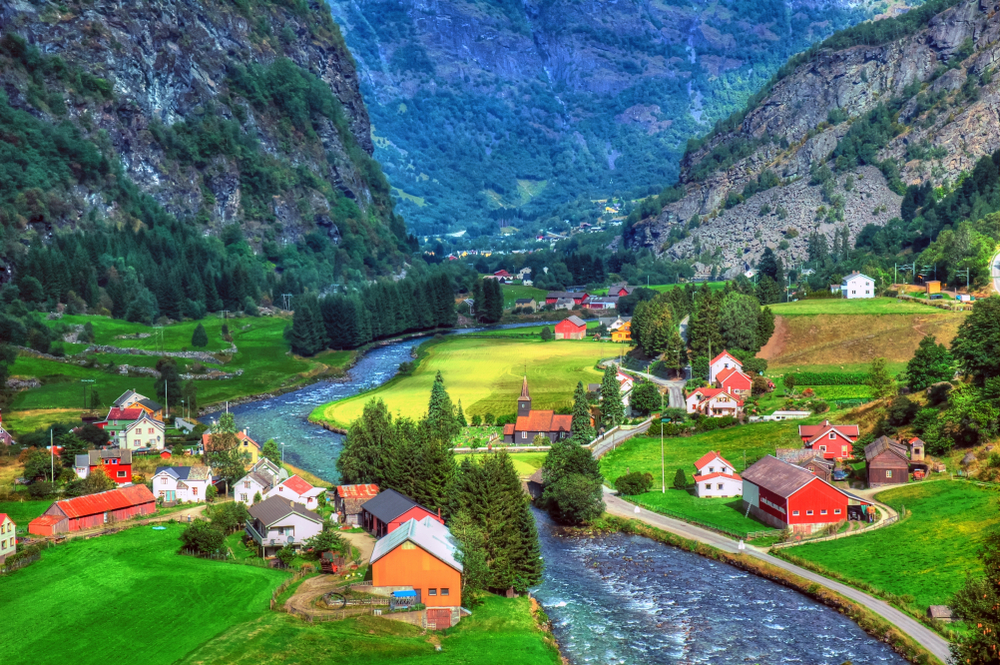
Underedal
One of the cutest towns in Norway, Undredal is famous for its colorful, idyllic houses, and its unproportionate goat-to-human ratio! Approximately 500 goats can be seen roaming the area’s fjord pastures!
Underdal is located along the Aurlandsfjorden, a branch of the Sognefjorden in western Norway’s fjord country. The tiny village is best known for its Undredal Stave Church (1147), the smallest of its kind in the entire country. Records first mention the town when the bishop of Bjørgvin placed the well-known scholar chancellor to the King, Pål Bårdson, in the town as the first designated representative to this church.
The town is also locally known for its goat cheese! A couple of farms around the village produce a distinct brown goat cheese (yes, from the 500 roaming goats around the city!) called Geitost. This cheese can be purchased from most local shops in the village. For the best experience in this town, it’s recommended to arrive in the morning or evening to avoid traffic from disembarking cruise ships.
Because the town is very small, it makes for a great day trip from Flåm. The tiny village was, until 1988, only accessible along the Naeroyfjord by boat, but today can be accessed by car or bus as well. Although fjord cruises offer beautiful views of the tiny town from the water, driving from Flåm to Undredal by route E16 is economical and surprisingly beautiful, as you’ll pass many small farms on the way.
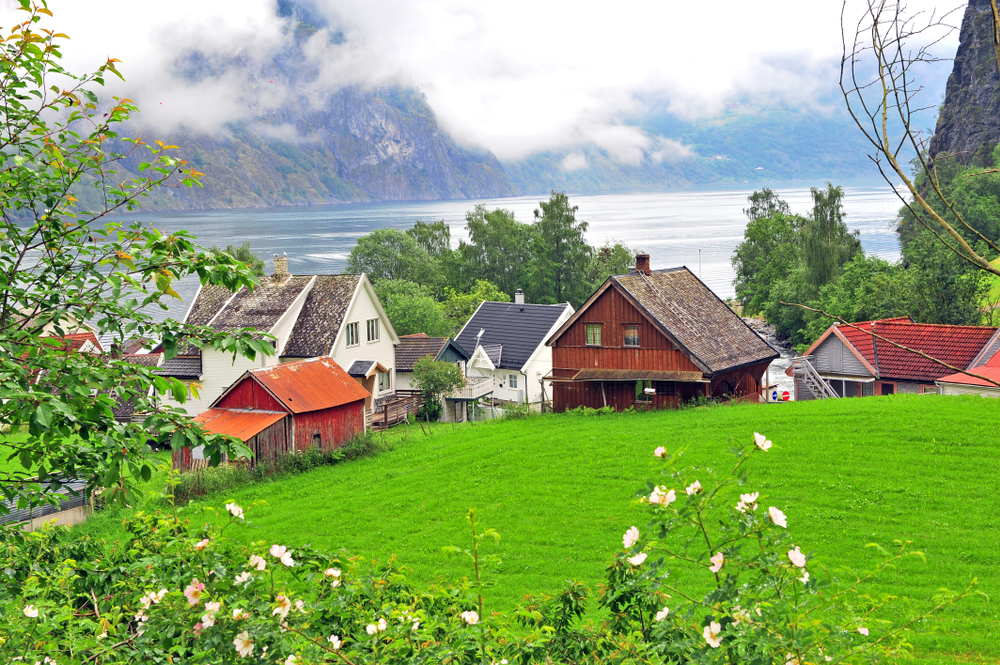
Bergen
Although the second-largest city in Norway, the image that it brings is one of charm. Rows of houses string the city’s forested bluffs and pool into its valleys in between. Lining the port, tightly fitted ancient buildings frozen in time anticipate the unbuckling of merchandise from the ships entering its harbor. These buildings collectively capture the essence of this World Heritage city’s legacy.
Founded by King Olaf Kyrre in the 1020s and named Bjørgvin, or ‘the green meadow among the mountains,’ the town immediately became an important center for trade, and was home to many kings while briefly serving as the capital of Norway. However, the 1320 establishment of the Hanseatic merchants’ kontor (wharf) into what is now the city’s Bryggen district would shape it most dramatically.
The Hanseatic League that set up port in Bryggen was a confederation of merchant guilds and merchant towns that dominated the Baltic region of maritime trade for over 3 centuries. The circle helped to protect and mediate the economic interests and diplomatic privileges of merchants at home and abroad. When the Hanseatic League opened port in Bryggen, the city became one of the first international trading ports in northern Europe! Byrggen’s iconic structures lining Vågen harbor are protected by UNESCO and are the oldest remaining buildings in the city. Although the structures date to just after 1702 when a great fire burned down the city, the space itself represents a linear tradition of merchant trading beginning in the 14thcentury.
Today the Bryggen district is commercial and houses museums, shops, restaurants and pubs which are best explored by foot. After capturing Bryggen’s leaning gabled rows of wooden buildings from the waterfront, don’t forget to explore them from behind! Here, small alleyways give way to the most adorable eclectic mess of small shops that include craftsmen, artists, and small boutiques.
The Hanseatic Museum and Schøtstuene is a great first stop in the area because it’s located in one of these conserved wooded houses in Bryygen and covers the Hanseati League period of Bergen. Opened in 1872, the inside of the museum includes an authentic trading room, a merchant’s office, sleeping quarters and objects collected in and around the town in the 19thcentury. Guided tours of the city will begin just outside of this museum. Additionally, don’t forget to visit the Bryggen Museum, which showcases all periods of the city’s history beginning in the Medieval period, and houses a permanent archaeological collection!
The oldest and tallest structure in the city, St. Mary’s church began construction in the 1130s and came to completion in the 1180s. For a great view of the church and the gorgeous historical city surrounded by fjords and sea, take a trip up Mount Floyan via cable car, or hike Mount Ulriken! One of the most iconic towns in Norway, Bergen must be on your list of cities to see!
Consider staying at this charming accommodation for some of the most amazing views from your own terrace!
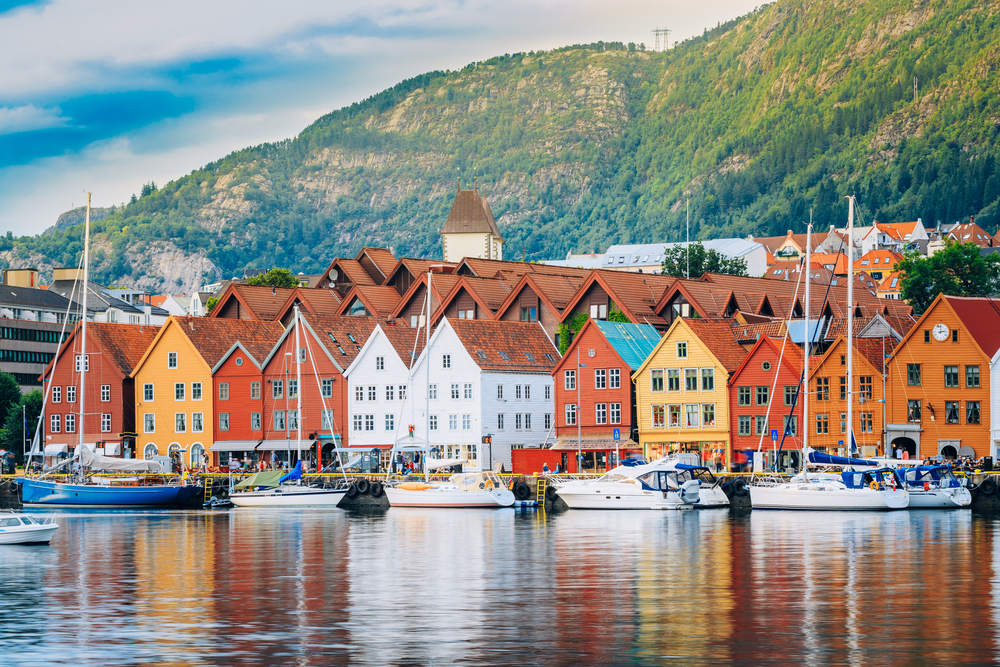
Geiranger
The magical landscape around the small village of Geiranger features snow-covered mountains, unrivaled waterfalls, lush vegetation and a deep blue fjord! The Geiranger fjord, a UNESCO World Heritage landscape, is widely considered to be the most scenic fjord destination in Scandinavia!
Once in Geiranger, spend time in the city’s cute bakeries, restaurants, and souvenir shops before taking on some scenery. The greatest viewpoints are just a hike or drive away! The most popular, Flydalsjuvet, is 4 km from the city center, and the location from which most of the fjord’s popular photos are taken. Don’t forget to sit in the Fjordsetet (aka the Queen’s seat)!
From this same route you can access Geiranger skywalk, located on the top of Mount Dalsnibba. For more drop-dead gorgeous photos, head on to Djupvatnet lake, a mountain lake 1000 meters above sea level. And if the weather permits, taking a kayaking tour in the Geirangerfjorden is one of the most magical experiences anyone could dream up!
One of the most prominent sights in Geiranger may be its magnificent waterfalls. The seven Sisters waterfall is the most popular, and it’s the tallest in Norway! Best experienced from may to July, the legend of the Seven Sisters tells a story of seven unmarried girls all being courted by a Suitor waterfall on the other side of the fjord. Right beside the waterfall, the historic Knivsflå farm hangs onto the side of the cliff! One of many historic cliff farms in the area, these can be explored in more depth with tours available from the town.
To take in as much of the fjord as possible, including many of its most popular waterfalls, we recommend taking a cruise ferry through the fjord. In fact, cruising into the city is one of the best ways to enter into the city. Alternatively, Norweigian county road 63 also passes through the village, offering beautiful scenic views of the surrounding fjords. However, it should be noted that the mountain routes aren’t always open during winter months due to snow, and many popular view points will be closed as well.
Home to one of the most fantastic landscapes in the country, Geiranger is one of the towns in Norway you’ll need at least a couple of days to take in! The Grand Fjord Hotel is a perfect home-base to begin your adventure in Geiranger!
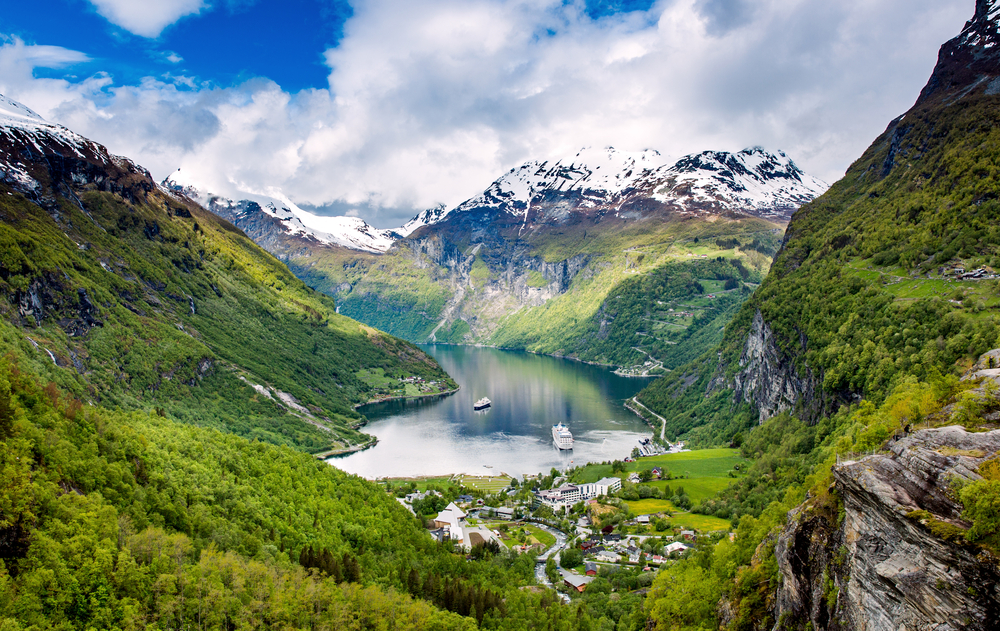
Reine
This small but breathtaking village of only 329 people is located on the island of Moskenesøya in Northern Norway’s Lofoten archipelago. Dotted with classic red fishermen’s huts called Rorbuers, the relatively flat island bodies in this archipelago contrast beautifully against the backdrop of the granite peaks shooting out from the arctic sea. This is one of the easiest towns in Norway to enjoy, as it’s photogenic from almost every angle. And of course, it’s a great location to capture the Northern lights from September to April!
Many tourists come to Reine and the Loften Islands exclusively to hike for the spectacular views the landscape has to offer! One of best views of the three villages of Reine, Sakrisøy and Hamnøy can be seen from the top of Reinebringen, a steep and strenuous climb that requires a good level of agility to conquer. The 1 km hike consists of 1566 stone steps, followed by a muddier, eroding trail near its summit. However, this challenge hasn’t prevented a record number of tourists from taking the hike. The two viewpoints at the summit are incredibly rewarding! For a less crowded and less strenuous hike, consider climbing Munken (it’s very close to Reine).
If arriving during the summer, don’t forget to enjoy the view of the Reinefjorden from inside a kayak! These can be rented indie the city from Reine Adventure. Also head on to the other side of the island to visit Rambergstranda Beach, a beautiful destination that can also be hiked!
Perhaps the most iconic photo location in all of the Loften Islands, the Hamnøy Bridge overlooks one of the most beautiful views of the town’s classic fishermen huts with the towering Festhelltinden in the background. The location is easy to access at any time, and therefore a wonderful place to capture the aurora borealis!! In fact, you can even stay in one of the cute Rorbus huts pictured in the popular vantage point! Eliassen Rorbuer boasts the PERFECT location!
In addition to Hamnøy, Reine has a couple of other close neighbors that should be taken advantage of while visiting Reine. The small fishing town of Sakrisøy is located between Reine and Hamnøy, and is unique for featuring dominating yellow-colored fisherman huts. Also pay a visit to the gorgeous village of Å to visit the Norwegian fishing museum that includes a the history of the Loften islands over the centuries. The Rorbus- dotted drive between the villages is gorgeous!
One of the most stunningly beautiful towns in Norway, Reine can be reached by the E10 scenic route across the Loften islands. It’s only 9km east of Moskenes where a ferry from Bodø arrives, making it fairly easy to access. Many popular photo opportunities will come your way as you drive across the E10, so drive slowly and take your time!

Alta
Located in Norway’s northernmost county, the town of Alta lies inside the innermost reaches of the Altafjord. The city is famous for its midnight sun, which occurs from May to august when the area experiences sunlight for 24 hours a day, and its view of the aurora borealis during the winter months. During the summer, the region’s prehistoric rock art site and its adjacent museum are open to visitors. Whichever time you choose to visit, Alta has something unique to offer!
During the warmer months, the long hours of sunlight are ideal for taking full advantage of the region’s forests, mountain plateaus, and coasts. Popular activities include biking across the Finnmarksvidda mountain plateau or going fishing in the Altaelva, one of the world’s best salmon rivers.
A short drive away in Hjemmeluft, the Alta Art Rock site has the largest concentration of pre-historic rock art in Northern Europe. The artwork, which can be found in over 45 sites within a 15 km radius, includes at least 6000 carvings and paintings that range in date between 4200 bce and 500 bce.
The great significance of the rock carvings and paintings lie in the insight it gives us into people’s thoughts, their social organization, technology, use of resources, rituals, and ultimately their interpretation of the world around them. The art, which portrays humans in activities involving reindeer, elk, bears, dogs, foxes, technology, boats, etc., has also allowed researchers to trace cultural change in the region over time.
The open-air World Heritage Rock Art Museum, or Alta Museum is located in an area with the largest concentration of carvings and is where the historical site’s tours begin. The museum includes photographic documentation of other areas not accessible by tours, as well as an exhibit on the region’s local Sami culture. For more information, check out the Alta Museum’s official website.
Between the winter months of November and January you can expect a fantastic display of the aurora borealis, permitting the sky is clear. The location has historically been famous for its amazing views of the Northern Lights, and the world’s first observatory was even built here in the 19th century just to view the lights! The winter in this region is also famous for the unique blue glow that fills the sky while the sun is out. Take advantage of the beautiful ‘blue season’ and go dogsledding or take part in a snowmobile safari!
If you’re planning to come to Alta during the winter season, don’t miss the opportunity to stay at the Sorrisniva Igloo Hotel! The luxurious hotel is made completely of ice and snow and must be rebuilt every winter after having melted with the spring!
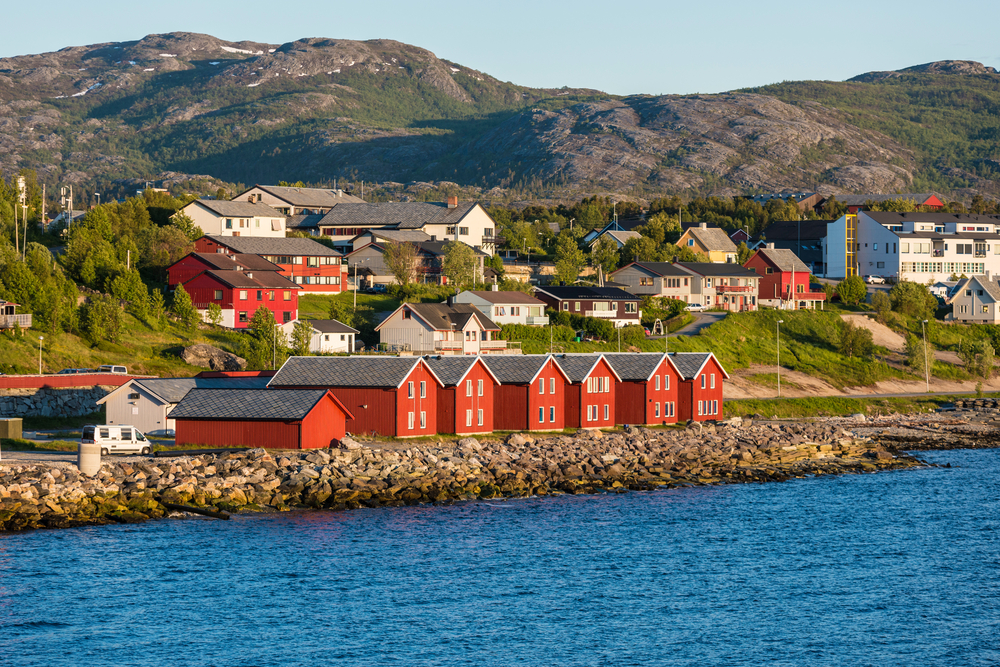
Alesund
Far from the typical small fishing towns in Norway you’d expect to find in the north, Alesund is a sprawling urban center built on multiple islands with a dominant Art Nouveau architectural lean that gives this city a unique, but romantic appearance.
In January of 1904, a fire ravaged Alesund, leaving over 10,000 people homeless in one night. After a short period of planning, the city was almost completely rebuilt over a three-year period. Consequently, most of the buildings in the downtown area are constructed out of stone, brick and mortar in the Art Nouveau style, which was an international novelty at the time of construction!
This movement (also known as Jugendstill in Norway) was at its height of enthusiasm at the turn of the 20th century, and was known for breaking down traditional distinctions between the fine arts and applied arts through mediums like iron, glass, and ceramic. The style used a beautiful new dynamism and movement in its forms. Although different from many other towns in Norway, the unique circumstances that shaped it make it make it a legacy of its own.
In homage to this substantial period of history for the town, the Jugendstilsenteret serves as the city’s Interpretation Centre, and should be the first place you stop on your trip here! This building serves as a visitor center to the city, and as an institution whose purpose is to disseminate cultural knowledge to the local population.
An absolute must-see stop while in Alesund is the Sunnmøre museum, an outdoor folk museum devoted the Norwegian coastal culture and lifestyle. The museum includes 55 historical houses from many different periods that have been moved to this site from across the region. Also featured in the museum are replicas of old Viking ships, an exhibit on the region’s Medieval period, and an archaeological exhibit displaying artifacts excavated from the city’s old trading center!
Similar to many other towns in Norway, the city can be accessed via cruises coming from select international destinations like and Hamburg, Newcastle, as well as from other Norwegian port cities like Bergen and Trondheim. Alternatively, the city’s Alesund airport offers several daily flights from popular nearby destinations like Oslo, Bergen and Copenhagen.
Consider staying here on your next trip to Alesund!
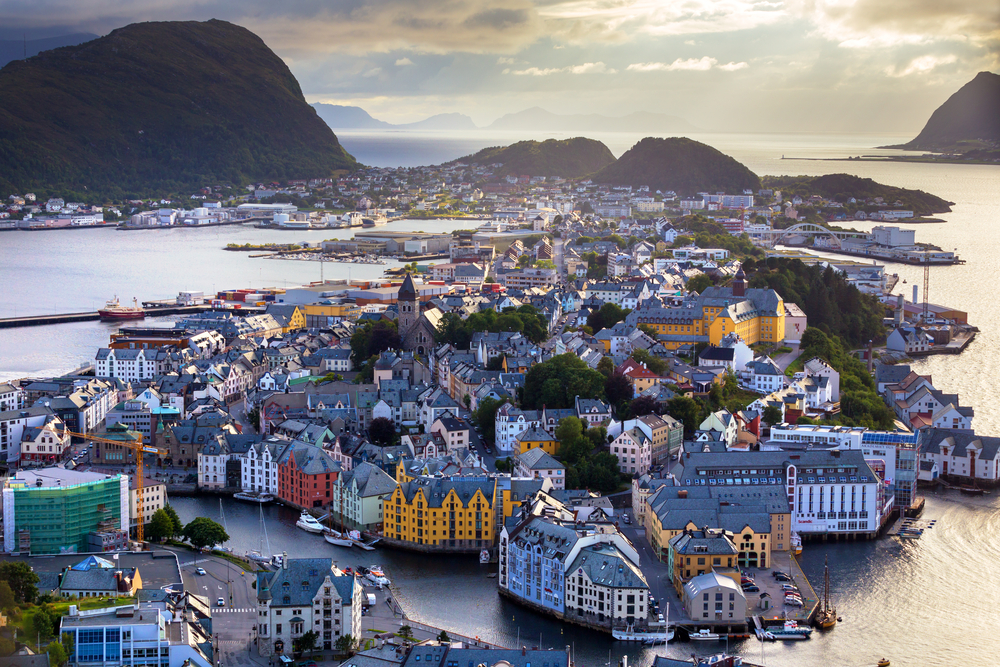
Trondheim
The fourth-largest city in Norway, Trondheim was founded in 997 by King Olav Tryggvason where it served as the country’s capital during the Viking era, and as the central religious center for Norway’s Catholic and Protestant churches. Today a bustling university town of over 30,000 students, the city has SO much to offer, from cultural heritage events and coffee shops, to historical sites and green spaces.
The Nidaros Cathedral, as the National Sanctuary of Norway, is by far the most visited site in the city. Supposedly built on top of the grave of King Olav after he’d been declared a saint by the catholic church, the cathedral was completed around 1300 in the Romanesque style. Today, due to severe fire damage from multiple fires during the Protestant Reformation era, its exterior has a mostly gothic appearance. The building is a worthwhile stop, even if to just view it from the outside!
Many people visit Trondheim just to walk or bike through the historical Bakklandet neighborhood, which famous for its wooden homes, cafés, and stellar views of the city! Unlike many other Norwegian cities, this delightful historical center doesn’t have too much traffic! From here, visit the Old Town Bridge from where you’ll be able to capture the best view of Trondheim’s signature wharfs along the Nidelven river.
When finished exploring the center of the city, take the tram up to Lian from St. Olav’s Gate! Other than being an excellent viewpoint of the city, it’s a great escape from the urban environment. Swimming in or picnicking around the beautiful lake at the top of Lian is also a popular summer option! You might also want to explore the forested area around the lake, which offers many foot on paths. The second must-see location that’s popular for picnics (and learning a bit of history) are the grounds of the Kristiansten Fortress.
Another popular historical stop, Sverresbourg, was the historical location of King Sverre Sigurdsson’s residence and fort within the medieval town of Nidaros (Trondheim). Now a part of the open-air Trøndelag Folk Museum, the castle’s remains represent the oldest stone castle in Norway! In addition to this castle, the museum includes over 80 historical buildings, many originally taken from downtown Trondheim. They’re displayed outdoors and outfitted as they would have appeared in time’s past! For more information, stop by the museum’s official website.
With endless, incredible options to preoccupy any and every kind of person, we’ve only scratched the surface of things to do while in Trondheim. This gem of a city and must be on the very top of your list of towns in Norway to visit!
Here’s a great place to stay in the center of all the action!
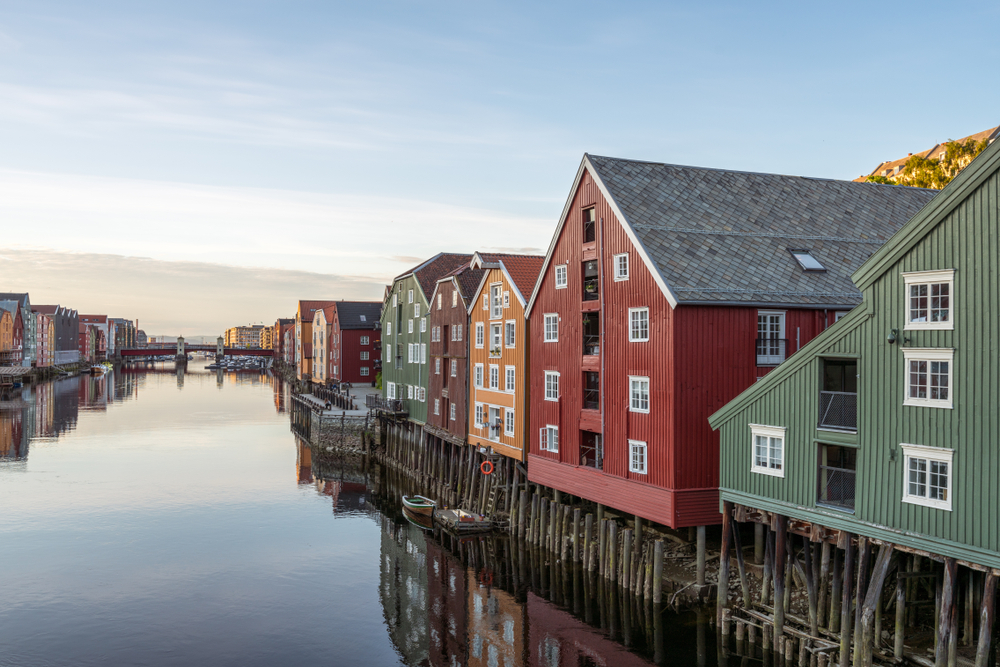
Stavanger
A quaint little town in the western side of the country, Stavanger is known for its old white residential houses, its colorful marketplace, and some of the best natural landmarks in the Norway!
For a small town, the number of preserved wooden buildings here is impressive. Dating back to the 18thand 19thcenturies, the Gamle Stavanger residential neighborhood’s winding cobblestone streets, old-fashioned streetlamps and over 170 charming small white wooden homes makes for a walk that takes you back in time.
After spending some time in the town’s colorful shopping street, Øvre Holmegate, head towards Domkirki, one of the best-maintained cathedrals in the country. The church has been in consecutive use since the 12th century! If coming with kids, definitely make a stop in the Norwegian Canning Museum to try canning for yourself, and learn more about one of the most important industries of the historical city.
One of the most popular things to do while in Stavanger is to take a cruise or ferry on the Lysefjord! The fjord is considered to be one of the best in Norway. Taking a cruise, you’ll pass many small islands, caves, waterfalls, and the Pulpit Rock attraction! Being a popular fjord to visit, the area is also scoured with some of Norway’s most popular hiking destinations. Pulpit Rock is the most famous of them all, and the sole reason many visitors come to Stavanger. This tourist attraction is a steep 604-meter-tall cliff rising over the fjord, with a 25 square meter flat top. The trip involves 4 hours of hiking roundtrip without transportation, but it offers an unimaginable view!
A second hiking destination that’s become more popular with tourists in recent years is the Kjeragbolten hike. This trail climbs the highest mountain in the area (Kjerag mountain) and features an epic photo opportunity on top of a boulder that’s straddled between the mountain crevice! However, the hike is lengthy and does require some endurance!
While in Stavanger you also won’t want to miss the world’s longest staircase! The Flørli 4444 is just a day trip away from Stavanger in the small town of Flørli. The town of only 4 residents is home to a modern hydroelectric power station, as well as an aging discontinued one from 1921 whose cliffside pipelines still straddle a whooping 4444-step staircase. Originally used for maintenance and installation, today it’s a relatively unknown hiking destination with incredible views and a small lake at the top!
You’re next trip to Norway should definitely feature this heritage city! To make matters better, it’s also one of the most affordable towns in Norway! Check out this amazing apartment for your upcoming trip!
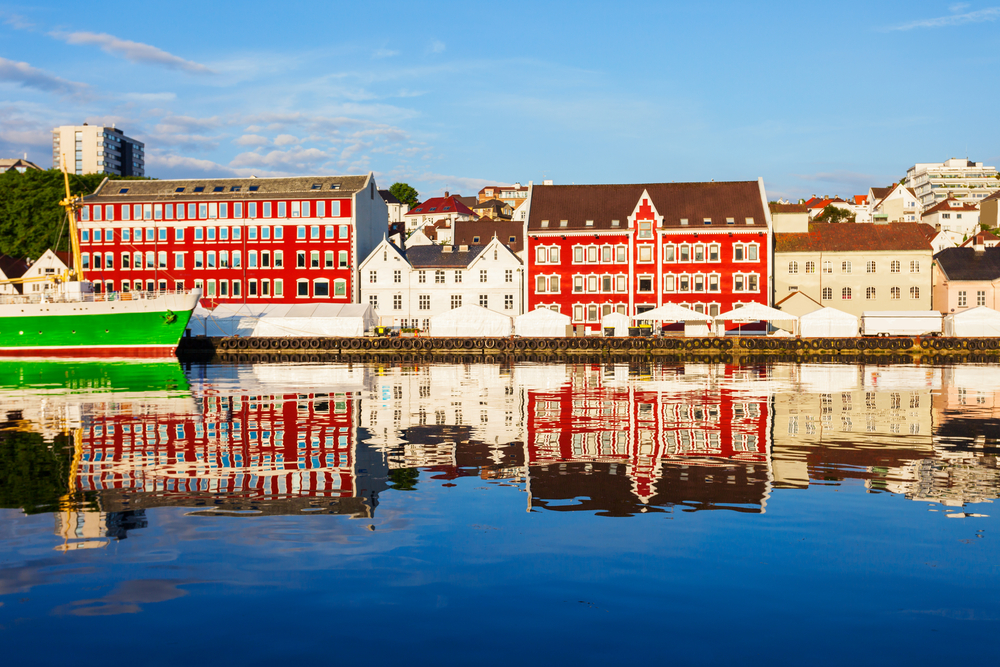
From its northernmost towns that are perfect for viewing the northern lights, to its western fjord country and its southern cultural hubs, these towns in Norway will offer a little bit of every amazing angle the country has to offer. Whether coming to see the landscape, or learn about the culture, these two facets are irreversibly intertwined.
Which of these are your favorite towns in Norway?
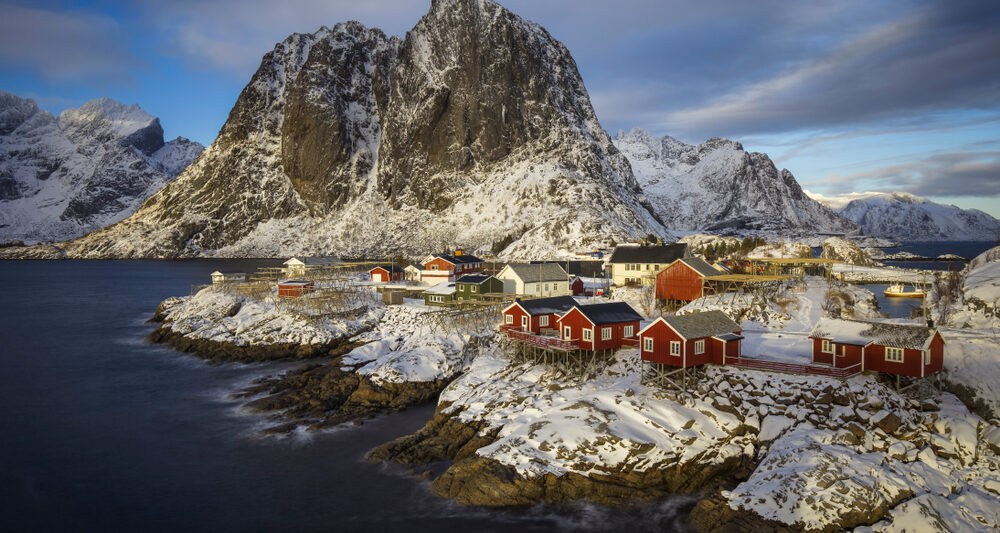
 7 Big Mistakes To Avoid When Visiting The Iceland Plane Crash
7 Big Mistakes To Avoid When Visiting The Iceland Plane Crash